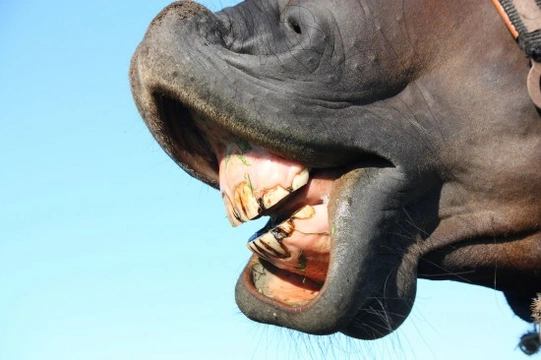
Does Your Horse Need Their Teeth Checking?
The one constant about keeping a horse is having a routine whether it's the time you feed in the morning to the way you tack them up to go for a ride. Horses like their “routine” as much as people do and quickly get used to the way things are done. For people it's a great way of not forgetting to do something.
Making a dental check-up part of an annual routine is as important as any other, if not more so because if your horse is suffering from a bad tooth, it will affect their behaviour both when you're in the saddle or on the ground and the reason is because they are in pain.
Horse dentists and vets recommend that a horse has their teeth checked at least every 6 months even if there are no signs of there being anything being wrong. The reason is that if a problem is picked up early enough, the easier it is to treat and the sooner your horse would be made to feel more comfortable.
Typically, there are five steps involved in a dental examination which would help evaluate the condition of your horse's teeth as well as their gums and the overall condition of their mouths. These are as follows:
- The first step would be to carry out a full oral examination
- The dentist would then evaluate the condition of your horse's overall mouth and their chewing capabilities
- The third part of the process would be to evaluate the condition of periodontal tissue (soft gum tissue)
- Next, an evaluation of teeth and root structures would be carried out
- Lastly, the dentist would evaluate the overall condition of oral tissue found in your horse's mouth
The Oral Examination
The first step in the process is typically done without a horse having to be sedated because it gives the dentist a clearer picture of the symmetry of their mouth. It also allows them to see if there are any painful areas in the mouth and whether any abnormalities both in the mouth and on the horse's head are forming or have already formed.
Should any abnormalities be found or if a horse's face is not symmetrical and they have any abnormal swellings, there are several reasons why this could be which include the following:
- A damaged tooth that's started to rot can cause abnormal swellings
- A cyst has erupted
- A tumour may be forming – neoplasia
- The horse may be suffering from sinus issues
- Trauma to their mouth or head
- An enlargement of their guttural pouch
- An enlargement of their lymph nodes
- A swollen saliva gland
- Odontogenic cysts which form when teeth are developing
If any swellings or abnormalities are deemed more serious, the dentist would recommend having more in-depth tests carried out which could include X-rays.
Evaluating How a Horse Chews
A horse needs to be able to chew their food well and a certain number of times in order for them to get all the nutrients they need out of it. The dentist would need to check your horse's incisors both the lower and the upper to ensure their bite is level and meet evenly.
Cheek teeth also need to be the correct shape for a horse to be able to chew their food comfortably and if any abnormalities are found these would need to be corrected typically by rasping the teeth to the correct shape.
Examining Soft Tissue
The third part of the process involves a thorough examination of your horse's gums (soft tissues) which also includes the following:
- Tongue
- Lips
- Cheeks
- Mucosa
- Both the hard and soft palates
- The gaps between teeth
There are certain obvious abnormalities which a dentist would be able to pick up on during this stage of the examination which include:
- Bleeding from gums or anywhere else
- Gingival enlargement
- Any abnormal swellings and/or growths
- Ulceration of the mouth
- Lacerations or abrasions in the mouth
It would be during this part of the process that a dentist would check if there are any retained teeth and if necessary recommend X-rays be taken to get a clearer picture of what is going on before deciding the best course of action.
There are certain other abnormalities the dentist would look for during this stage of the examination which includes the following:
- Whether a horse pockets food in their teeth – this often leaves them with puffed cheeks which is an obvious sign there might be a problem
- Swollen gums
- Bleeding gums
- Any odd spaces between the teeth
- Receding gums
- Bad breath – halitosis
- An excessive accumulation of tartar on the teeth
The Endodontic Examination
The dentist would take note of the condition of your horse's teeth, their structure and colour. If any abnormalities are found, this could be an indication of a more serious problem going on which could mean further tests and X-rays may be needed to establish the cause. When food gets stuck and builds up between the teeth, it is very good reason for the dentist to want to carry out more tests.
Conclusion
Dentists and vets recommend that horses have their teeth examined at least once every 6 months, even if there are no obvious signs there may be anything wrong. If a horse has a tooth problem, it will affect their behaviour quite dramatically especially should the bit sit on or near a problem tooth. A dentist would carry out a full examination of your horse's mouth before treating them and if necessary might recommend X-rays be carried out on any problematic areas before recommending what should be done to correct the problem.



